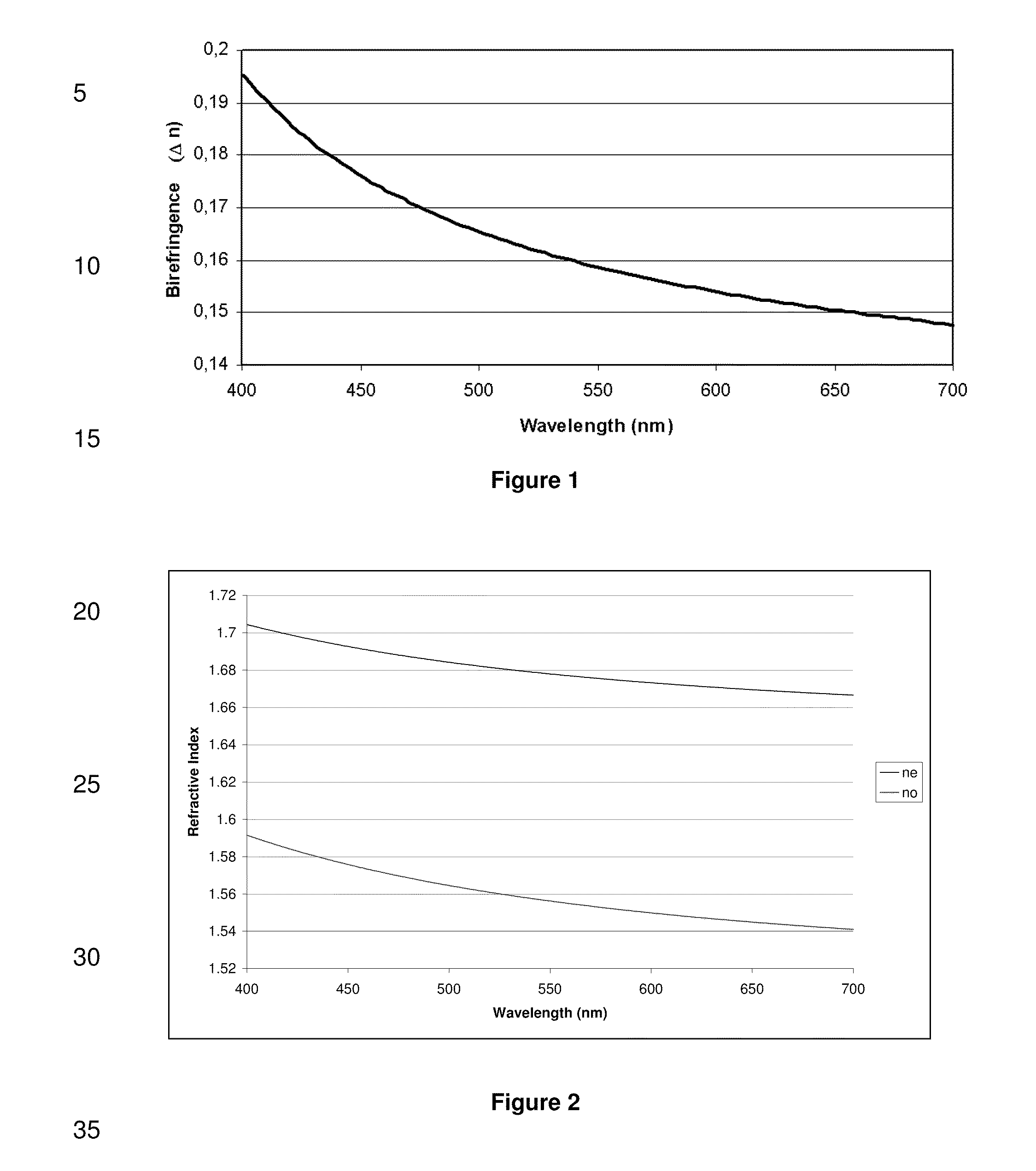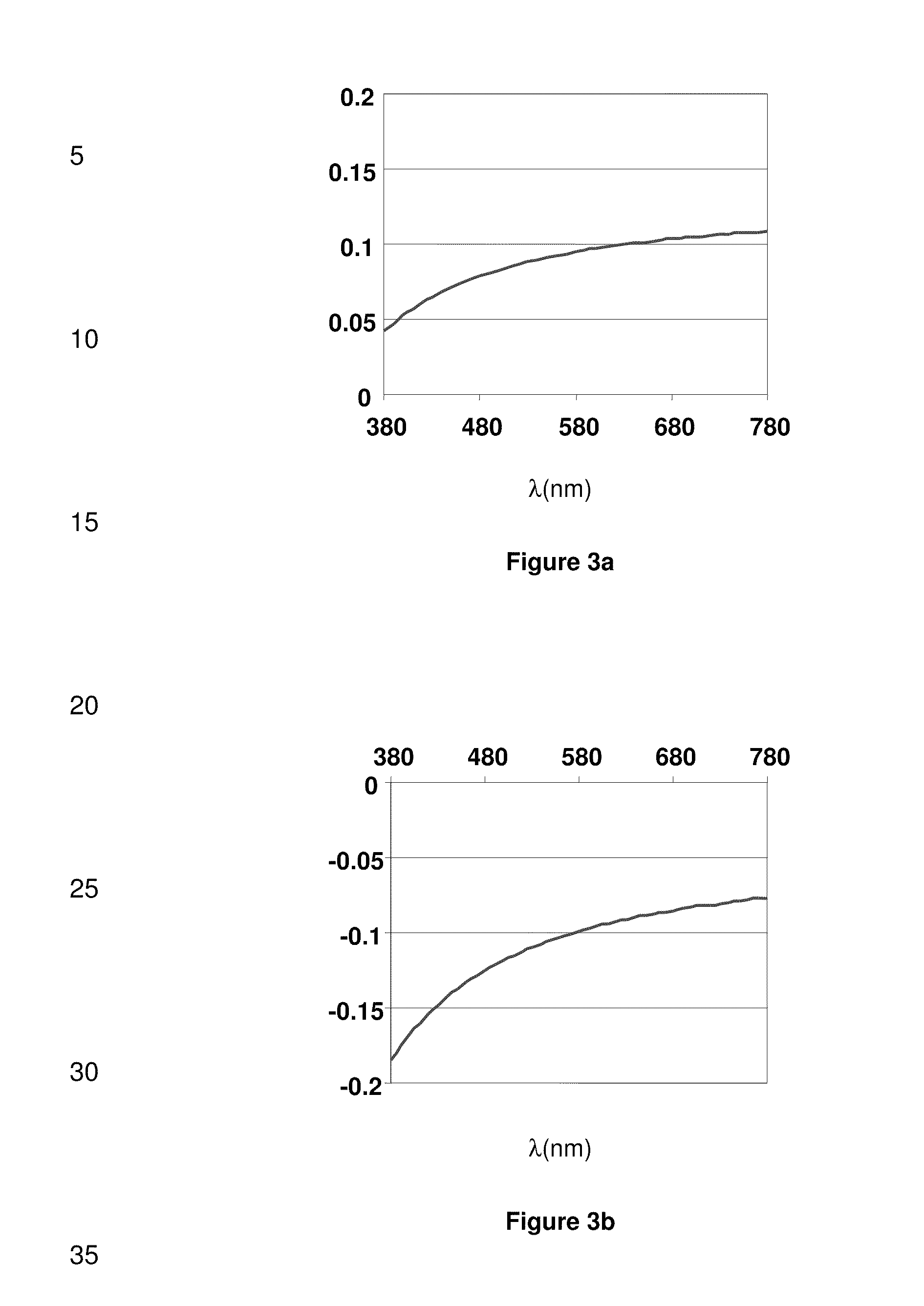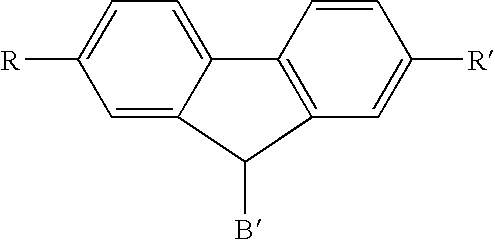Fluorene derivatives
a technology of derivatives and fluorene, applied in the field of fluorene derivatives, can solve the problems of not being able to disclose nor suggest polymerizable versions of these compounds, not being able to disclose nor suggest to use such compounds, and not being able to meet the requirements of thermal properties
- Summary
- Abstract
- Description
- Claims
- Application Information
AI Technical Summary
Benefits of technology
Problems solved by technology
Method used
Image
Examples
example 1
[0209]Compound 3.7 is prepared via the route shown in Scheme 1.
[0210]
[0211]The starting material 2,7-dihydroxyfluorene-9-one (3.1) is firstly protected with THP groups and subsequently reacted with trimethylsilylacetylene and BuLi to give the adduct (3.3). Removal of the trimethylsilyl groups, reduction of the tertiary alcohol (3.4), and removal of the THP protecting groups gives the useful intermediate (3.8). Reaction of this dialcohol with 4-[3-(3-chloro-1-oxopropoxy)propoxy]-benzoic acid gives, after removal of HCl from the chloropropionate group, the target product (3.7).
example 2
[0212]Compound (4.1) is prepared using compound (3.7) from Example 1 as shown in Scheme 2.
[0213]
example 3
[0214]Compound (5.1) is prepared using compound (3.7) from Example 1 as shown in Scheme 2.
[0215]
PUM
| Property | Measurement | Unit |
|---|---|---|
| wavelength | aaaaa | aaaaa |
| wavelength | aaaaa | aaaaa |
| wavelengths | aaaaa | aaaaa |
Abstract
Description
Claims
Application Information
 Login to View More
Login to View More - R&D
- Intellectual Property
- Life Sciences
- Materials
- Tech Scout
- Unparalleled Data Quality
- Higher Quality Content
- 60% Fewer Hallucinations
Browse by: Latest US Patents, China's latest patents, Technical Efficacy Thesaurus, Application Domain, Technology Topic, Popular Technical Reports.
© 2025 PatSnap. All rights reserved.Legal|Privacy policy|Modern Slavery Act Transparency Statement|Sitemap|About US| Contact US: help@patsnap.com



